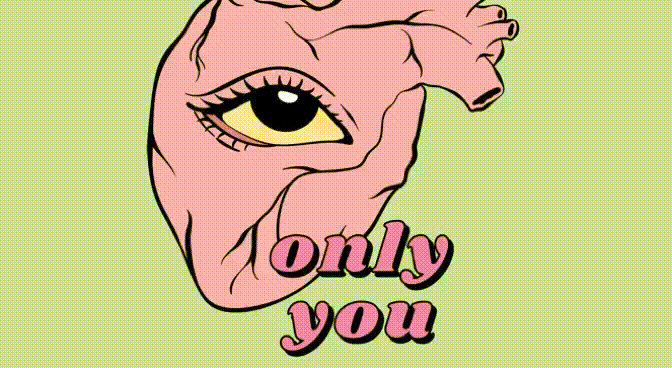Find out which symptoms, without exception, occur in all age groups
The World Health Organization estimates that out of the 2.2 billion people suffering from eye diseases worldwide, for at least a billion of them the disease could have been prevented. Apart from aging and genetic predispositions, eye health is influenced by many other factors we have control over ourselves, thus preventing disease and improving our health. This is why ophthalmologists, neurologists, endocrinologists, psychiatrists, rheumatologists, otorhinolaryngologists, plastic surgeons, general practitioners, pharmacists and engineers are brought together at X-Lab — the expert research hub by JGL — to analyse the latest research and, by applying a holistic approach, to share with us how to take care of our eye health and why that is important for our whole bodies.
What happens when you get dry eye disease and how to recognize the overlap in symptoms with allergic conjunctivitis, analyses for X-Lab ophthalmologist Chief Jasminka Salopek-Rabatić, M.Sc., MBA. "The eye exhibits quite a small number of symptoms and they are almost always tears, stinging or burning; redness, pain and itching, sometimes with eye discharge," warns the ophthalmologist. Here's what we can do before the first symptoms of allergic conjunctivitis appear.
1 How is dry eye related to allergies?
Both pathological identities, both dry eye and seasonal allergic conjunctivitis, result in overlapping symptoms which can be exacerbated. Symptoms in both cases significantly affect the quality of life due to discomfort, reduced productivity, social exclusion and a long-term toll on the individual due to aesthetic and functional eye abnormalities. Those are symptoms that occur without exception in all age groups.
2 How to recognize and how to deal with these two eye diseases at the same time?
The eye exhibits quite a small number of symptoms and they are almost always tears, stinging or burning; redness, pain and itching, sometimes with swollen eyelids and a discharge that is mucous, purulent or watery. In order to properly recognize and associate the symptoms accordingly, a detailed ophthalmological history is necessary, along with analysing and monitoring personal habits and daily activities.
3 What are the common symptoms of dry eye and allergies?
Svrbež oba oka kao dominantan i jako naglašen simptom upućuje na alergijski konjunktivitis. Pojavljuje se sezonski i naglo te je najčešće očekivan s obzirom na kalendarsko i vremensko pojavljivanje alergena (pelud trava, cvat drveća, ambrozija i sl.). Na skali jakosti od jedan do pet prepoznajemo ga po ocjeni od tri do pet. Kod suhog oka svrbež je bitno manjeg intenziteta i uvijek pomalo prisutan bez obzira na doba godine. Najčešće je povezan s vremenom provedenim ispred ekrana. Na skali od jedan do pet kategoriziramo ga ocjenom jakosti od jedan do tri.
4 Since allergy-related eye symptoms can be predicted given the seasonal occurrence of allergens, can we prevent them?
It is useful to follow the pollen calendar for continental and Mediterranean Croatia, which is available on the website of the Croatian Institute of Public Health. It is recommended to start by applying particular local antiallergic, preservative-free eye drops, two-drops per day, seven to ten days before the expected appearance of a given allergen, meaning in a timely manner before he development of the disease. It is recommended to apply preservative-free artificial tears with increased viscosity daily, as well as preservative-free artificial tears to alleviate allergy symptoms to rinse and dilute allergens, all the while keeping the drops refrigerated due to vasoconstriction. Washing your face, showering, washing your hair, wearing a ponytail or otherwise keeping your hair away from your face is also important, as this eliminates or reduces contact with allergens. We can also keep allergens out of the spaces in which we live or work by storing our shoes and clothes away from open air, wind or humidity. It is also recommended to change your pillow cases regularly, as well as to wear goggles in windy weather due to allergen intake and increased evaporation of the front surface of the eye. Because of wind and how it dries our eyes, allergens are introduced to our system more easily.
5 What happens to our eyes and how do we help ourselves if we feel pain?
Pain in both eyes in cases of dry eye, be it prickling or stabbing, most frequently occurs in the morning during waking hours or at any time of day as a result of long hours in front of the computer, looking at cell phones and other screens and reduced blinking. With dry eye, there is unpleasant and sudden pain when waking up in the middle of the night.
In allergic seasonal conjunctivitis, the pain is unpleasant and constant, regardless of the time of day or night.
It is recommended to use artificial tears with increased viscosity before going bed, or a gel, to make up for the water we need, because we do not blink at night and we cannot secrete tears. Tearing (epiphora) can occur more frequently as a defence mechanism or enhanced response to two diseases simultaneously. These tears are less concentrated, so they are less efficient in the eye’s self-defence, and they reduce visual acuity and the quality of our daily work routines.
Helpful tip: You need to take into account how much you blink and how much time you spend in front of the screen with reduced blinking because we forget to blink during focused work. If you wear lenses, it is recommended to use soft silicone hydrogel lenses, preferably with protection from blue light.
6 How to help with burning and redness of the eye?
Burning or stinging occurs in dry eye and allergic conjunctivitis alike, and in combination of both it is intensified and occurs with severe redness of both eyes. It is recommended to use artificial tears with increased viscosity and protective gel in the evenings.
Redness as a symptom is predominant in seasonal allergic conjunctivitis of both eyes, sometimes being fully red. With dry eye in mild cases the colour is somewhere between pink and reddish, except in severe forms of dry eye, which often requires cytostatic drugs in the form of eye drops or corticoid therapy. It is recommended to keep in mind the causality of it, not to think of it as a symptom alone, because a hidden bacterial or viral infection of the eyes is always possible, with possible consequences for eye health. Be sure to rest your eyes from wearing contact lenses and stop using makeup and other cosmetics.
Knowing and following your own habits, as well as knowing more about seasonal allergies and the occurrence of allergens (prevention) are the most important for reducing the symptoms of both eye diseases.
QUIZ
SUFFERING FROM DRY EYE SYNDROME? ANSWER THESE QUESTIONS AND FIND OUT HOW TO PREVENT IT AND WHAT TO DO WHEN YOU ARE ALREADY FEELING THE SYMPTOMS
QUIZ





